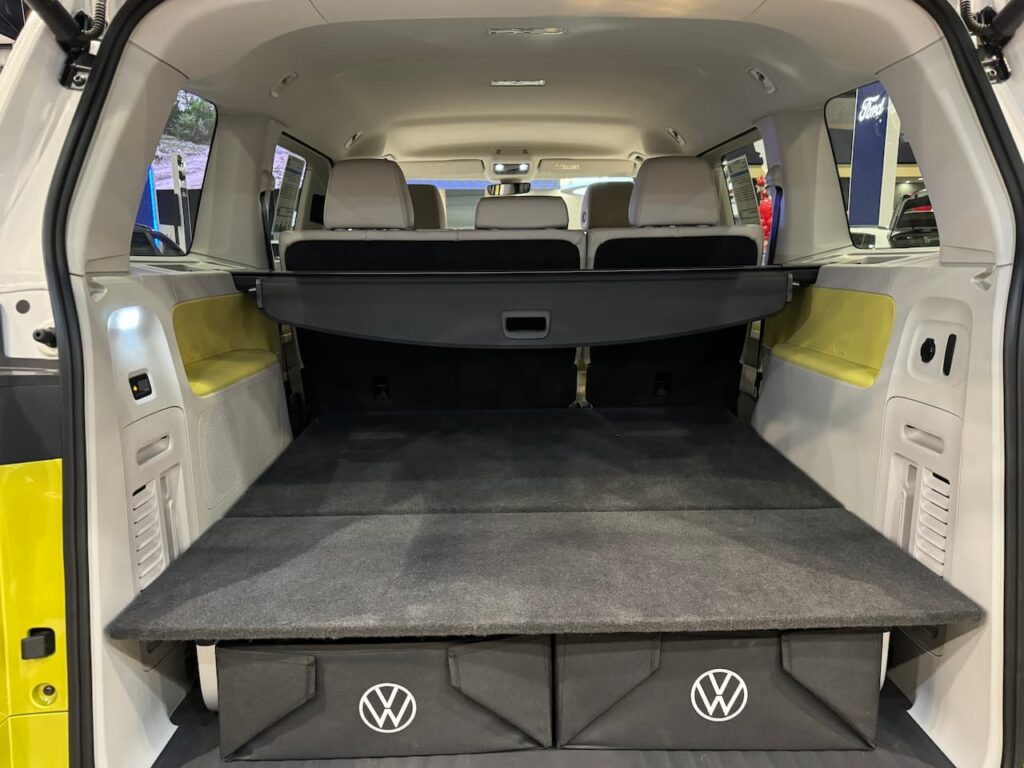The VW ID. Buzz is heading to Volkswagen stores in the U.S. later this year, and prior to the sales launch, the company is ferrying its electric minivan across the country for demos. At the Buffalo Auto Show 2024, the Germans presented a Euro-spec version of the van which received plenty of attention from American showgoers. I think it was drawing on both nostalgia and its innovative electric rebirth.
Design



Of course, this isn’t the version that’s bound for the U.S. (which will be a long-wheelbase variant identifiable by a unique cutout in the rear window), but it’s equally interesting, and not all that different from what would eventually be on sale.
I think that the ID. Buzz is a good mix of old and new. It matches retro design elements reminiscent of the classic Volkswagen T1 with modern, futuristic touches, creating a vehicle that’s like none other on sale in this country. Highlights include a large illuminated VW logo and a V-shaped hood, with an optional Candy White color for the upper section and roof, offering a two-tone color scheme for a splash of vintage flair.
Interior & Cargo
Stepping inside, I could feel right away that the ID. Buzz has the most innovative cabin among Volkswagen’s latest carlines. The design prioritizes comfort, offering a lounge-like ambiance with practical storage solutions and many convenience features. The extended wheelbase of the U.S. model promises ample space, with an expected cargo capacity of up to 2,469 liters (87.2 cu. ft.) with the seats folded.



Volkswagen will offer 6- and 7-seat configurations of its electric minivan in the U.S., featuring a 60:40 split bench and captain’s chairs, respectively. A 5.3-inch instrument cluster will provide essential information, while a 12.9-inch touchscreen infotainment system will also integrate AC controls.
Specifications
The base ID. Buzz will arrive with a rear-wheel-drive layout, powered by an 85 kWh battery pack and delivering 282 horsepower and 406 lb.-ft. of torque. This version should satisfy most drivers, especially those not planning to tow trailers. Volkswagen estimates a range of up to 260 miles on a single charge for this model.
For those requiring power, a trailer-towing capability, or all-wheel drive, an upgraded dual-motor version will be available, offering 330 horsepower. Impressively, its range is projected at 252 miles, only slightly lower than the base model.



Pricing & Release
Also See: First Look Review: The 2025 VW ID.7 is a charming Tesla Model 3 challenger
Volkswagen has not provided details on the pricing, but I don’t expect it to begin south of USD 60,000, which would make it quite exclusive. The official launch is slated for this fall, but an earlier introduction won’t really surprise me. There’s also speculation that local assembly might be a possibility in future model years, potentially reducing costs and qualifying for federal tax credits.
VW has also confirmed that it has no plans to import the ID Buzz Cargo model (commercial vehicle) to North America. The operations stateside will focus on the ID. Buzz passenger version.
An automobile engineer by training, I’ve analyzed the global car market since 2005, with a keen focus on EVs since 2008. My journey in online automotive publishing spans 16 years, during which I have reviewed cutting-edge automotive technologies and interviewed leading CEOs and vehicle developers from around the world.




